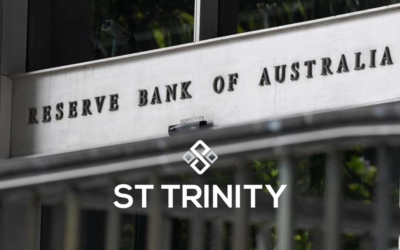Mortgage refinance is one of the most popular options for homeowners to potentially save money, secure better interest rates, or access more favourable loan terms. However, beneath the surface of this seemingly promising opportunity lies the need for careful consideration. While a more competitive interest rate may seem enticing at first, it’s essential to be aware of potential hidden fees and costs that may accompany this alluring low rate when refinancing your mortgage, potentially resulting in a higher overall expense than anticipated.
Table of Contents
Here are the 7 hidden costs in Mortgage Refinance
1. Loan Application Fees
In Australia, it’s common for lenders to charge an application fee to cover the administrative costs of processing your mortgage refinance application. While this fee is typically manageable, it’s a piece of the puzzle when tallying up the total cost of your mortgage refinancing decision.
2. Valuation Costs
A fundamental requirement for mortgage refinance is a property valuation, ensuring that your property’s current market value aligns with the desired loan amount. Valuation costs can vary based on factors like your property’s location and complexity. So, it’s essential for those contemplating refinancing their mortgage to factor in these valuation costs when crunching the numbers.
3. Legal and Settlement Fees
Mortgage refinancing, much like securing your initial mortgage, involves legal procedures. You’ll need the services of a solicitor or conveyancer to navigate the legal aspects of the mortgage transfer. These professional services come with associated fees that should be on your radar when evaluating the viability of your mortgage refinance.

4. Lender’s Mortgage Insurance (LMI)
If you are pursuing refinancing your mortgage with a loan amount exceeding 80% of the property’s value, you will need to pay Lender’s Mortgage Insurance (LMI). This insurance safeguards the lender in case of default and can be a significant cost.
When you’re in the process of mortgage refinance, if the new loan results in a higher LVR compared to your current one, you might find yourself obligated to pay for LMI. It’s crucial to take this additional expense into account and include it in your refinancing calculations. However, it’s worth noting that LMI is a one-time payment, and its financial feasibility hinges on the overall cost savings you attain through refinancing your mortgage.
5. Break Costs or Early Repayment Fees
For homeowners with fixed-rate mortgages, you will need to be mindful of potential break costs or early repayment fees if you decide to refinance your mortgage before your fixed term concludes. These charges compensate the lender for the interest income they’d otherwise receive from the full term. Knowing the ins and outs of your current mortgage terms is vital to uncover the presence of such costs when you apply for a mortgage refinance.
6. Discharge Fees
Similar to break costs, transitioning to a new lender via refinancing your mortgage often triggers discharge fees from the existing lender. These fees cover administrative expenses related to finalizing the original loan. Discharge fees, though variable, need to be accounted for in the overall cost assessment of your mortgage refinance.
7. Ongoing Fees
Beyond the initial costs, mortgage refinancing introduces ongoing fees associated with the new loan. These may include monthly account fees, annual charges, and potentially offset account fees. Balancing these ongoing expenses with the benefits of your new loan terms is a crucial step in making an informed decision to refinance your mortgage.
FAQs
What is Mortgage Refinance?
Refinancing your mortgage means moving your mortgage balance – the amount of money that you still owe – from one bank to another. In the process, you take out a new mortgage with a new lender, offering you the opportunity to choose a completely different home loan product, such as one with a potentially lower annual interest rate, fewer fees, or different features compared to those offered by your existing lender.
You can even switch from a variable-interest-rate home loan to a fixed-rate loan or split your balance between two new home loans with different interest rate types. Depending on the bank or lender you choose, refinancing might come with incentives like cash back on your new home loan.
You can use mortgage repayment calculators to figure out how much you might have to pay with a new home loan. If your current payments are staying the same or going down and you’re managing them well, you’re in good shape. But if your loan payments go up, make sure you can comfortably handle the new payments every two weeks or each month.
What are The Benefits of Refinance Your Mortgage?
When contemplating refinancing your mortgage, it’s crucial to invest time and effort into understanding why you want to refinance and what potential benefits you aim to achieve. Refinancing can offer several advantages:
- Save Money: You can potentially save money by securing a lower interest rate or reducing fees associated with your new loan.
- Reduce Repayments: Refinancing can lead to lower monthly repayments, providing more financial breathing room.
- Access Additional Funds: Refinancing allows you to borrow more for various purposes, such as home renovations, investments, or purchasing a new car.
- Stability with Fixed Rates: You can opt for a fixed-rate home loan, which locks in your repayments at a stable rate, offering financial predictability.
- Debt Consolidation: Refinancing enables you to consolidate multiple loans into one, streamlining your financial commitments.
However, it’s essential to note that refinancing often involves extending your loan term, which may result in paying more interest over the life of the loan.
Therefore, it’s crucial to have a clear understanding of your refinancing goals. When you know what you want to achieve, it becomes easier to ask the right questions of lenders and select the loan that aligns best with your needs.
When Should I Consider Refinancing My Home Loan?
Suppose the Reserve Bank indicates that interest rates for home loans are going down. In that case, it may be a great time to think about refinancing, especially if other lenders are advertising a better interest rate than your current rate. Or, if rates for home loans are going up, you may want to lock in a fixed rate before the interest rate hike. Either way, it’s wise to approach your existing lender first.
Although they can’t give you credit assistance, most lenders will renegotiate a lower interest rate to keep your business – a more effortless and cost-effective alternative to refinancing your home loan with a different lender.
You may ask, what is the current average interest rate?
As of July 2023, you can check the latest average interest rate here according to this free tool.
Bottom Line
Mortgage refinance in Australia holds great promise for enhancing your financial prospects, but it’s a journey that demands a thorough understanding of potential hidden costs. Before taking the plunge, arm yourself with diligent research and cost estimates from expert real estate firms.
By carefully examining your current loan terms, grasping the intricacies of potential charges, and comparing different offers, you’ll be well-prepared to navigate the landscape of mortgage refinancing with confidence. Unveiling these concealed financial aspects empowers you to make choices aligned with your economic aspirations.
Ready to explore your mortgage refinancing options or need expert guidance on your mortgage journey? Our team of property experts is here to assist you every step of the way. Feel free to reach out for personalized assistance and insights tailored to your specific needs.




